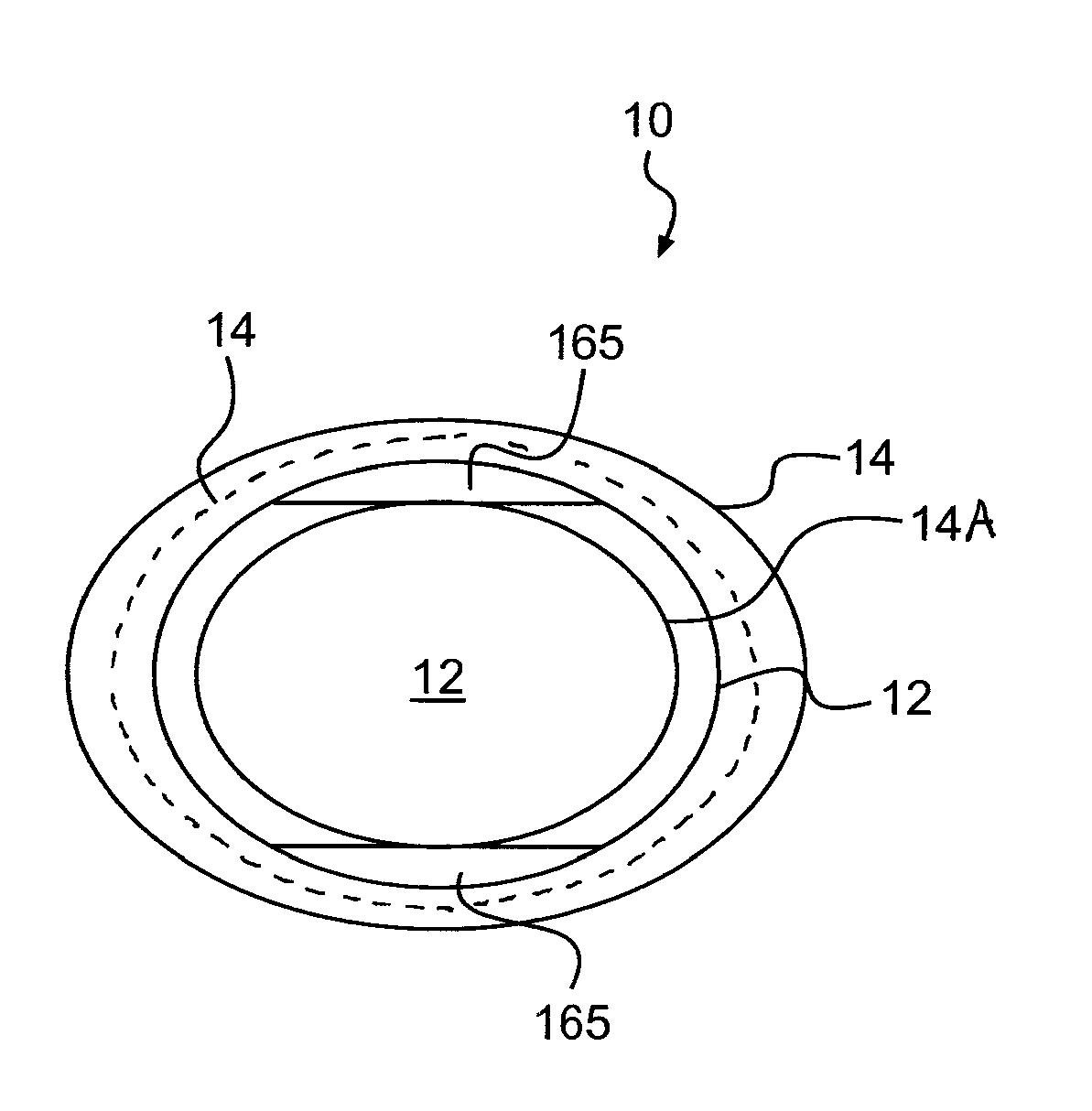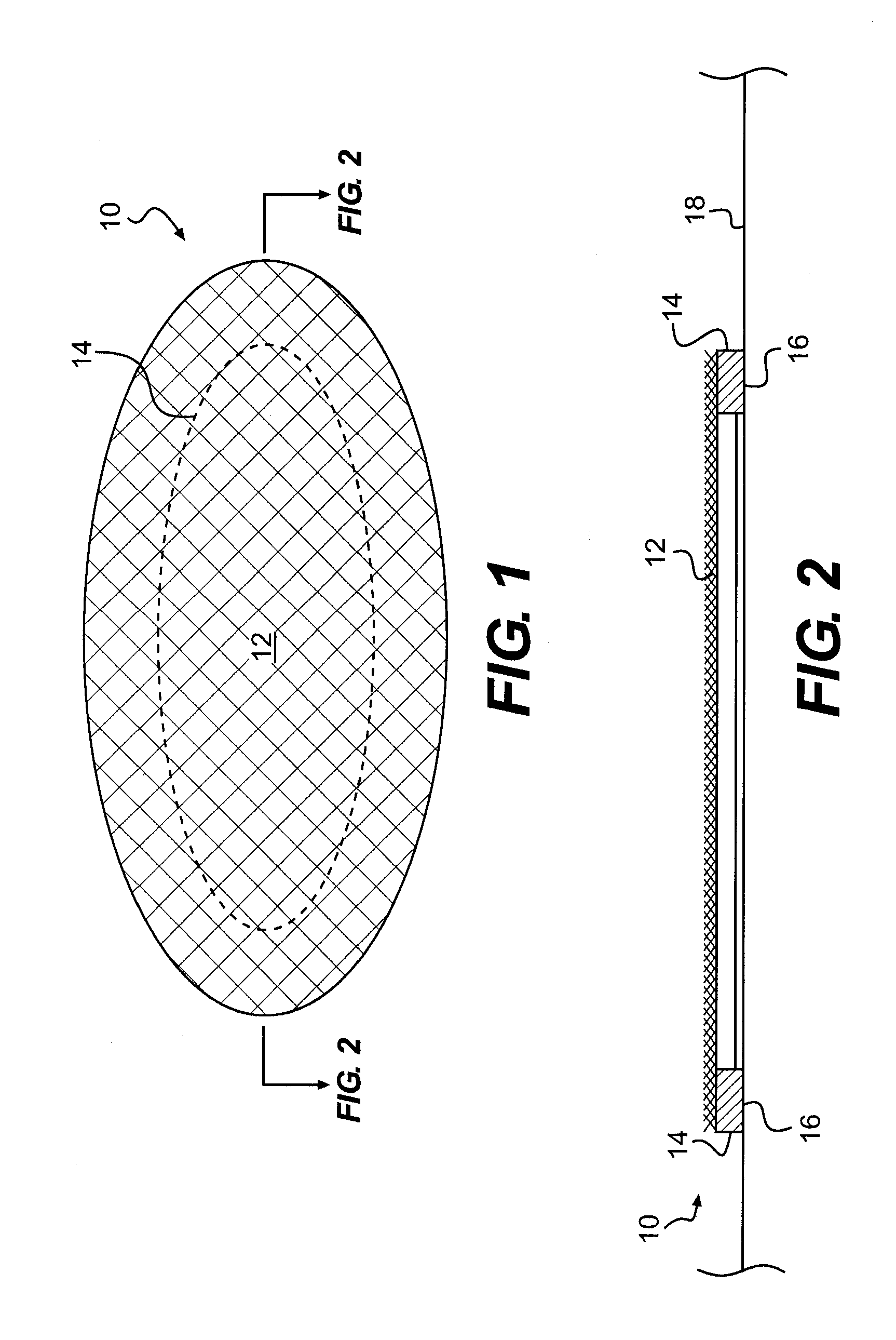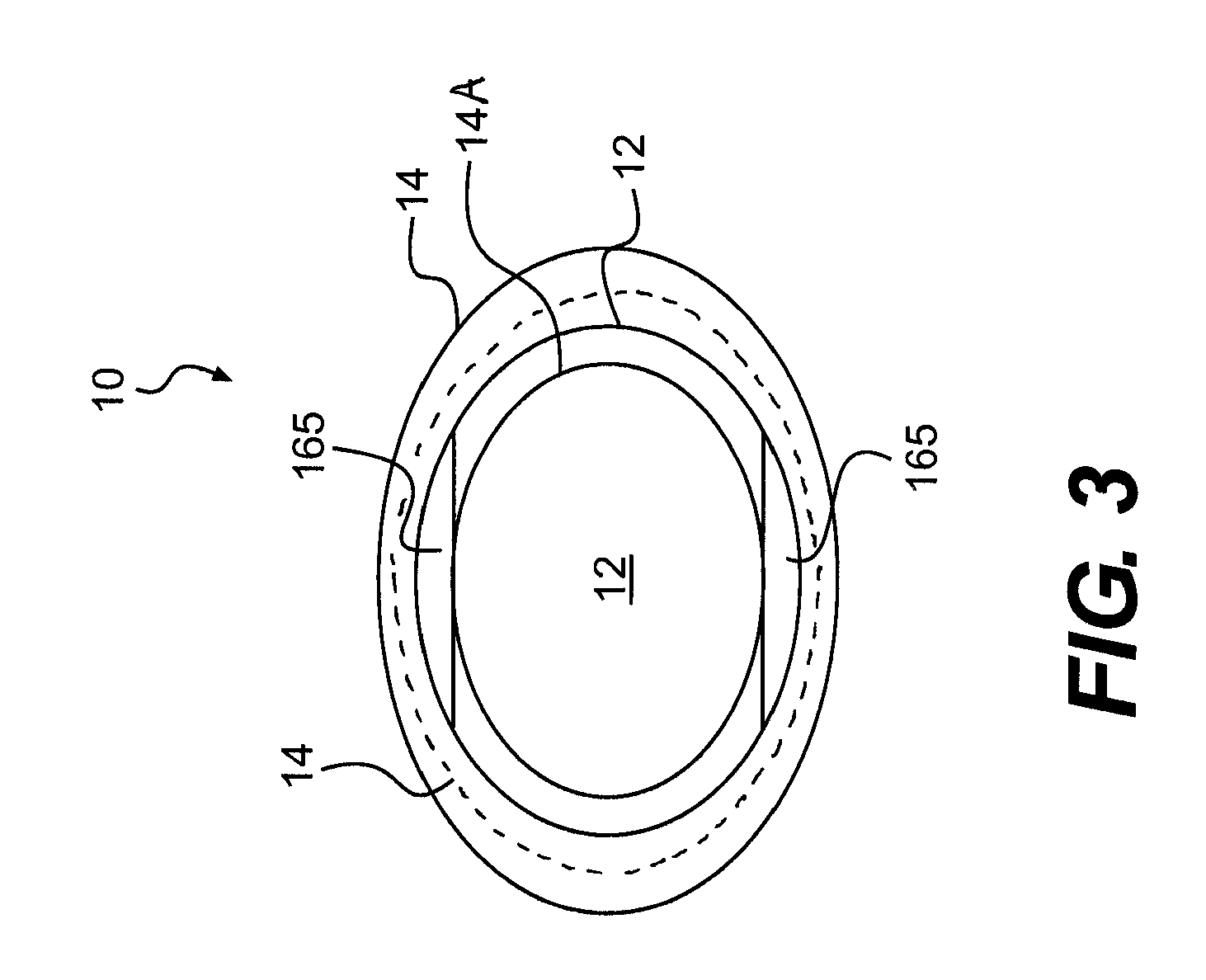Respiratory nasal filter
a technology for respirators and filters, applied in respirators, treatment rooms, transportation and packaging, etc., can solve the problems of cumbersome and invasive removal of filters from wearers' faces, reducing the usability of filters, and filter wear is quite noticeable when worn, so as to reduce the inhalation of second hand smoke, and be convenient to carry.
- Summary
- Abstract
- Description
- Claims
- Application Information
AI Technical Summary
Benefits of technology
Problems solved by technology
Method used
Image
Examples
first embodiment
[0035]As shown in FIG. 1, the nasal filter 10 of the invention comprises a generally oval-shaped configuration dimensioned to be slightly larger than the usual size of the periphery of a person's nasal orifice, namely a person's nostril. As best shown in FIG. 2, the nasal filter 10 comprises a filter layer 12 composed of a microporous filter material. The microporous filter material of the filter layer 12 preferably is composed of a moisture resistant filter material with sufficient pore size to filter out the unwanted particulate, bacteria or virus.
[0036]The microporous filter is preferably a spunlaced polyester fabric. This spunlaced fabric is nonwoven. A preferred nonwoven fabric is the PS-1025 provided by Polymer Science, Inc., the technical disclosure of which is hereby incorporated by reference. The PS-1025 is a ¾ ounce beige colored apertured spunlaced polyester fabric, with a total thickness of 0.003 inches. As would be appreciated by a personal skilled in the art, various c...
second embodiment
[0043]Referring now to FIGS. 3-5, the respiratory nasal filter 10 of the invention comprises a clear, oval ring-shaped base layer 14 with the adhesive 16 applied to the underside of the base layer 14. The filter layer 12 is formed in a smaller size relative to the clear base layer 14 and is affixed to the underside of the base layer 14. The base layer 14 therefore slightly overlaps the peripheral edge of the filter layer 12 such that the filter layer 12 is adhered to its underside by the adhesive 16. However, the size of the base layer 14 is sufficiently large to define an adhesive area 14A on the base layer 14 beyond the periphery of the filter layer 12. The adhesive 16 thus functions to permanently adhere the filter layer 12 to its underside while also providing adhesive area 14A that removably adheres to the person's skin about the periphery of the person's nostrils.
[0044]It is noted that additional adhesiveness may be provided to the adhesive area 14A. More specifically, a stron...
PUM
| Property | Measurement | Unit |
|---|---|---|
| total thickness | aaaaa | aaaaa |
| inner diameter | aaaaa | aaaaa |
| inner diameter | aaaaa | aaaaa |
Abstract
Description
Claims
Application Information
 Login to View More
Login to View More - R&D
- Intellectual Property
- Life Sciences
- Materials
- Tech Scout
- Unparalleled Data Quality
- Higher Quality Content
- 60% Fewer Hallucinations
Browse by: Latest US Patents, China's latest patents, Technical Efficacy Thesaurus, Application Domain, Technology Topic, Popular Technical Reports.
© 2025 PatSnap. All rights reserved.Legal|Privacy policy|Modern Slavery Act Transparency Statement|Sitemap|About US| Contact US: help@patsnap.com



